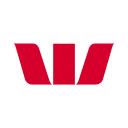World Solar Bank to be set up by 2022 – Director General, International Solar
In his first media interview after taking office as the second director general of the ISA this week, Dr Ajay Mathur spoke exclusively to Zawya from the organisation’s headquarters in Delhi on the concept of the World Solar Bank, the ISA’s role in developing the solar industry worldwide, and the emerging hydrogen industry.
WORLD SOLAR BANK IN 2022
The ISA has proposed the establishment of a World Solar Bank to address the financing gap for solar projects worldwide. Dr Mathur said a feasibility study has been carried out by Brickworks Analytics and a roadmap of the concept has been developed.
He explained: “The bank is a financial mechanism which pools resources from around the world and uses them to finance solar projects in our member countries. We do this at a scale so that it lowers transaction costs for our member countries.”
He said the required funding can be channeled into three buckets. “One is the direct transaction cost […] the money that will go in to solar panels, the distribution systems, etc.; the second bucket is enabling the transaction to occur. […] It may be a payment-guarantee mechanism in one country or purchase agreements in another country. […] The third is what you need to do to prepare the ecosystem.”
He said the three buckets will be anchored by different agencies, and the ISA will co-ordinate their efforts so that the projects move ahead sooner than they would otherwise. When asked about risk mitigation services, he added, “Clearly risk mitigation is one of the buckets that we would like to make happen.”
A proposal will be put forth for approval in the ISA Assembly to be held in October this year, he said.
The bank is still a work in progress, and the capitalization will depend on the chosen business model, he said. “We need to have a business model that works. […] Ideally, I would like to see [that] it is demonstrated at a small scale. We will have the first business models working in the next few months and the solar bank will start working deep into 2022,” he said.
FUTURE FOCUS
Mathur said that the ISA hopes to focus its energies on three key interconnected parts. The first is accelerating solarization at scale, working with countries with country-level approaches to enable solar energy to be part of their programs and determining how solar energy can become the energy source of choice at the centralized or decentralized level.
“It means working with them to see what kinds of solar products—a solar pump, a dentist’s chair or a solar cooker—[are in demand] and how we can get supply chains working, get the capacities and funding for these,” he said. “The second is to continuously update ourselves as a community of solar practitioners and understand what is happening to technology, investments and markets.”
He continued: “Right now, we have about 43 partners in terms of technology, investments and markets, and this number may increase. We need to make sure we work with these partners and are able to bring out these updates on an annual basis so that we are learning from whatever is happening.”
The third pillar is capacity building, which includes creating assets, developing the expertise to run and maintain them, and then expanding the capacity base, he said.
ISA AND HYDROGEN
Reflecting on the developments in the hydrogen sector and how the organisation could play a part in it, he said, “The ISA will have to be in the solar hydrogen space […] there is no way we cannot be there.”
The ISA’s role will depend on understanding the current barriers and where individual countries are in terms of commercial viability, he said. The biggest barrier today is cost, as solar-generated hydrogen costs $5 per kilogram, while gas-based hydrogen is produced at $2 per kilogram. However, the cost of the former is decreasing while the cost of the latter is increasing.
“The gas model is centralized, while the PV model is decentralized. There are some countries where,…
Read More: World Solar Bank to be set up by 2022 – Director General, International Solar














